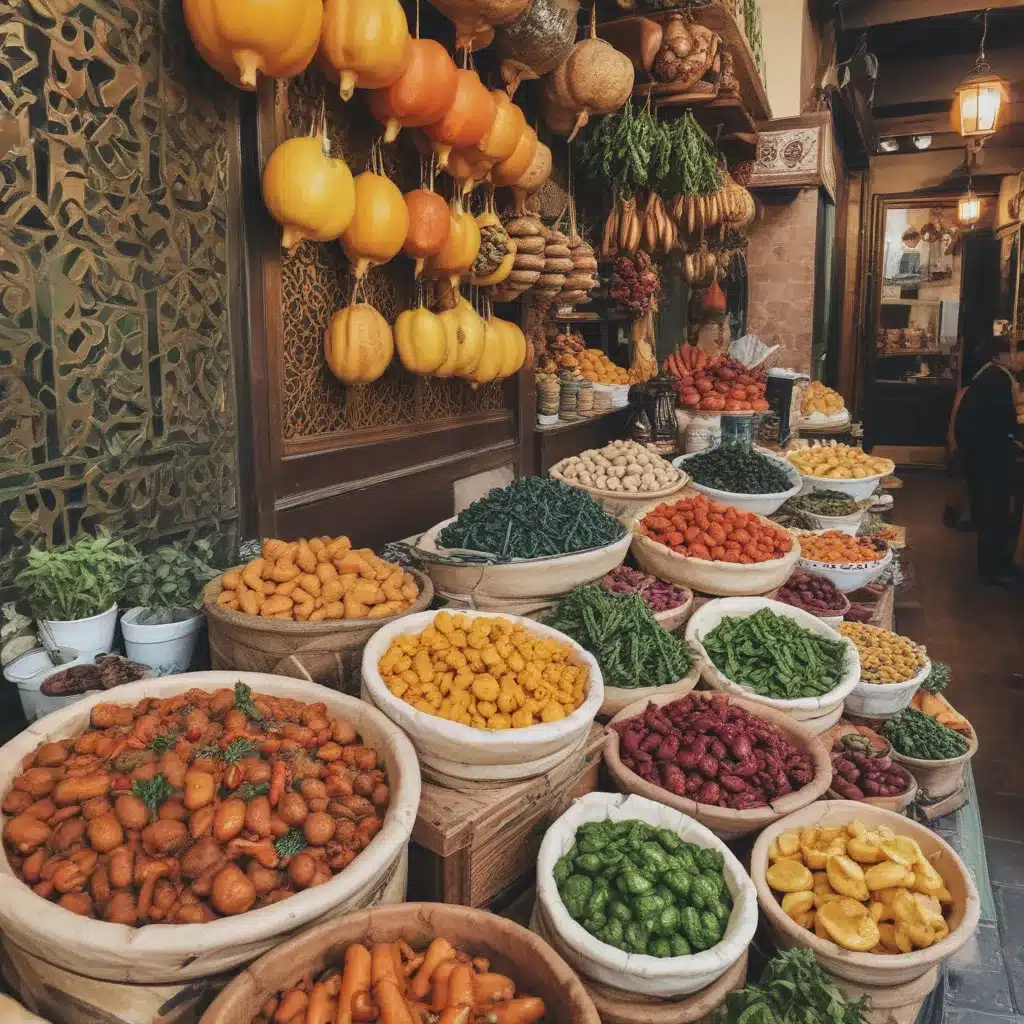
Uncovering the Secrets of Moroccan Cuisine in the Heart of the Big Apple
As I step into El Bahia, the renowned Moroccan restaurant nestled in the bustling streets of New York City, I can’t help but feel a sense of anticipation and excitement. The aromas wafting through the air – a tantalizing blend of spices, simmering tagines, and freshly baked breads – instantly transport me to the vibrant markets of Marrakech.
But this isn’t Morocco – it’s the heart of the Big Apple, a melting pot of cultures where the flavors of the world converge. And it’s here, in this unlikely setting, that I’m about to embark on a culinary journey, exploring the rich and diverse food culture of Morocco.
Discovering the Captivating History of Moroccan Cuisine
As I settle into a cozy corner of the restaurant, I can’t help but wonder about the story behind the tantalizing dishes on the menu. Where do these flavors come from, and how have they evolved over time?
The history of Moroccan cuisine is a fascinating tapestry, woven with the threads of various civilizations and cultures that have left their mark on this North African country. From the ancient Berber tribes to the Arab, European, and Mediterranean influences, the culinary traditions of Morocco have been shaped by a rich and diverse heritage.
One of the key elements that define Moroccan cuisine is the use of spices – a legacy of the country’s strategic location along ancient trade routes. Fragrant spices like cumin, cinnamon, ginger, and paprika have been integral to Moroccan cooking for centuries, lending depth and complexity to the dishes.
But the influence of Morocco’s diverse cultural history goes beyond just the spices. The country’s geographical proximity to the Mediterranean has also left its mark, with the incorporation of ingredients like olives, citrus fruits, and leafy greens – not to mention the essential couscous, a staple grain that has become synonymous with Moroccan cuisine.
As I delve deeper into the history, I’m struck by the way Moroccan food has been a reflection of the country’s social and political landscape. From the opulent royal banquets to the humble street food stalls, the culinary traditions have evolved to meet the needs and tastes of the people.
Exploring the Vibrant Flavors of Moroccan Cuisine
With a newfound appreciation for the rich history behind Moroccan cuisine, I’m eager to dive into the vibrant flavors that await me at El Bahia. As I peruse the menu, my eyes are drawn to the intriguing array of dishes, each promising to transport me to the bustling souks and serene courtyards of Morocco.
One of the standout dishes is the classic Moroccan tagine – a slow-cooked stew named after the distinctive clay pot in which it’s prepared. The menu offers a tempting selection, from the fragrant lamb and prune tagine to the vegetarian-friendly eggplant and tomato version. As I take my first bite, I’m immediately captivated by the depth of flavors, the tender meat, and the perfectly balanced sweetness and acidity.
Another signature dish that catches my eye is the couscous, a staple grain that has become a beloved part of Moroccan culinary traditions. At El Bahia, the couscous is served with a variety of toppings, from succulent roasted vegetables to tender lamb or chicken. The fluffy grains absorb the flavorful broth, creating a harmonious blend of textures and tastes.
But the Moroccan culinary experience at El Bahia extends far beyond the main dishes. The appetizers, or “mezze,” are a delightful introduction to the diverse flavors of the country. From the creamy hummus and tangy harissa to the fragrant chickpea fritters and marinated olives, each bite tells a story of Morocco’s rich culinary heritage.
As I savor each dish, I can’t help but marvel at the artistry and attention to detail that goes into Moroccan cuisine. The presentation is nothing short of stunning, with vibrant colors, intricate garnishes, and beautifully plated dishes that seem almost too beautiful to eat.
Connecting with the Essence of Moroccan Hospitality
But the true essence of Moroccan cuisine isn’t just about the food itself – it’s about the experience, the hospitality, and the sense of community that surrounds it.
At El Bahia, I’m not just a customer; I’m a guest, welcomed with open arms and a genuine desire to share the cultural traditions of Morocco. The staff, with their warm smiles and attentive service, make me feel like I’m part of a larger family, invited to partake in the joyful celebration of Moroccan cuisine.
As I linger over a fragrant cup of mint tea, I can’t help but be struck by the sense of conviviality and togetherness that permeates the restaurant. Families gather around the table, sharing stories and laughter, while groups of friends engage in lively conversations, their voices rising and falling in a rhythmic dance.
It’s in these moments that I truly understand the significance of food in Moroccan culture. It’s not just sustenance – it’s a means of bringing people together, fostering a sense of community, and celebrating the rich traditions that have been passed down through generations.
Embracing the Vibrant Flavors of Morocco in NYC
As I reluctantly prepare to leave the cozy confines of El Bahia, I can’t help but feel a pang of sadness. The journey through Moroccan cuisine has been a revelation, a delightful exploration of flavors, history, and cultural traditions.
But then I remember – this isn’t the end of my culinary adventure. Right here, in the heart of New York City, I have the opportunity to continue my exploration of Moroccan cuisine, to discover new dishes, and to connect with the vibrant food culture of this extraordinary country.
And so, with a renewed sense of excitement, I step out into the bustling streets of the city, eager to continue my quest to discover the secrets of Moroccan cuisine in NYC. Who knows what delightful surprises and hidden gems I might uncover next?


